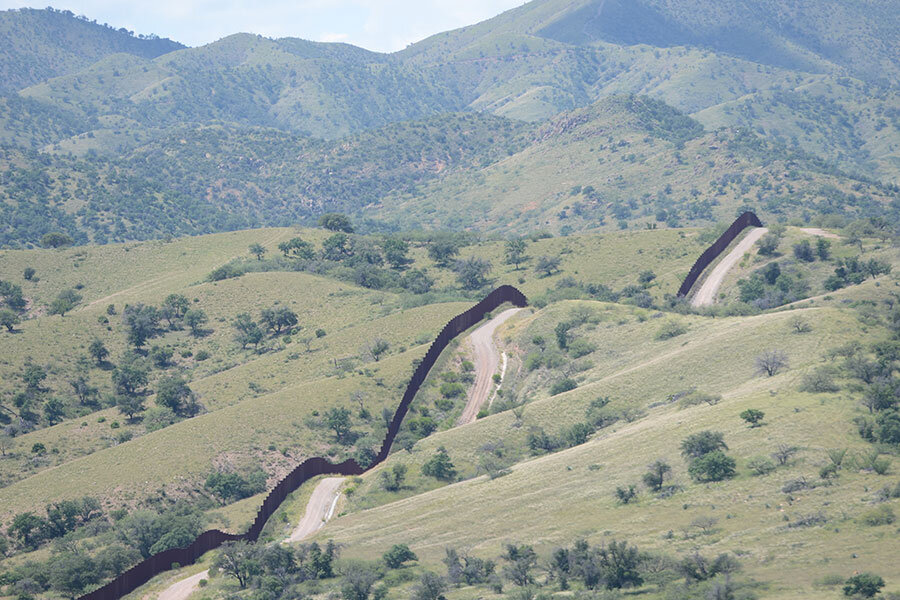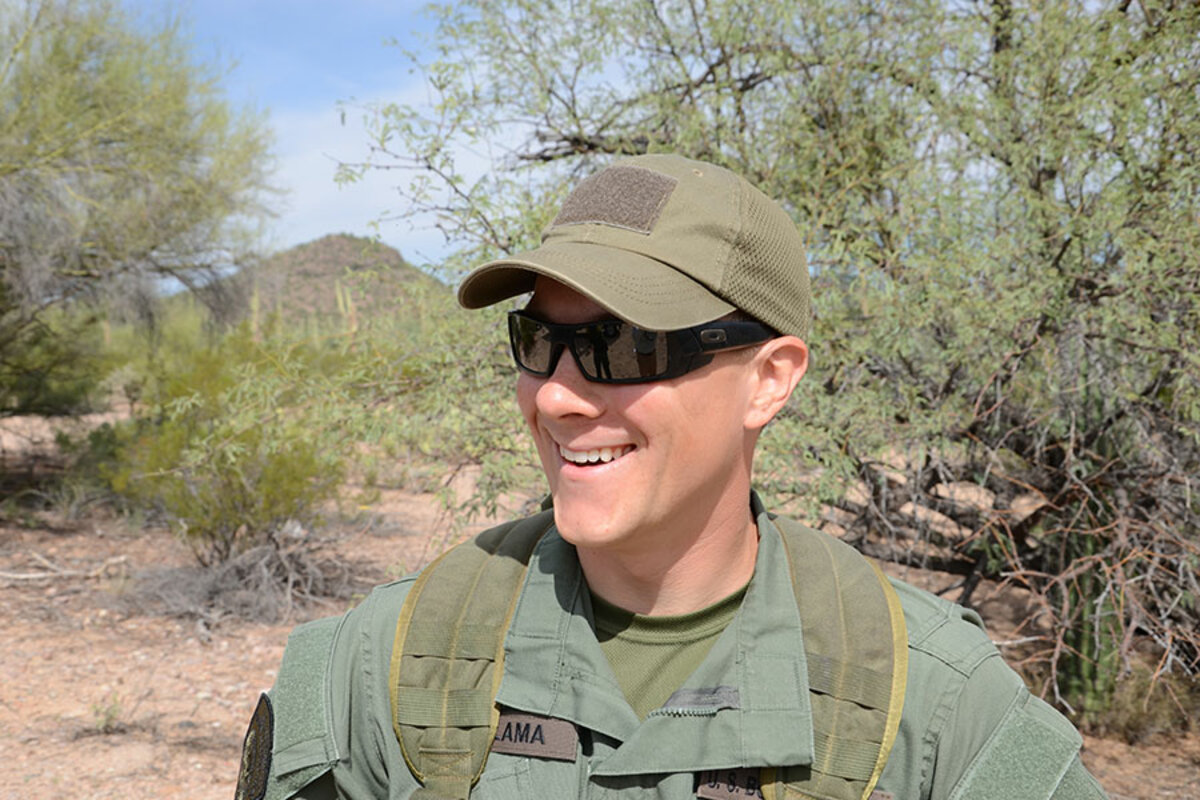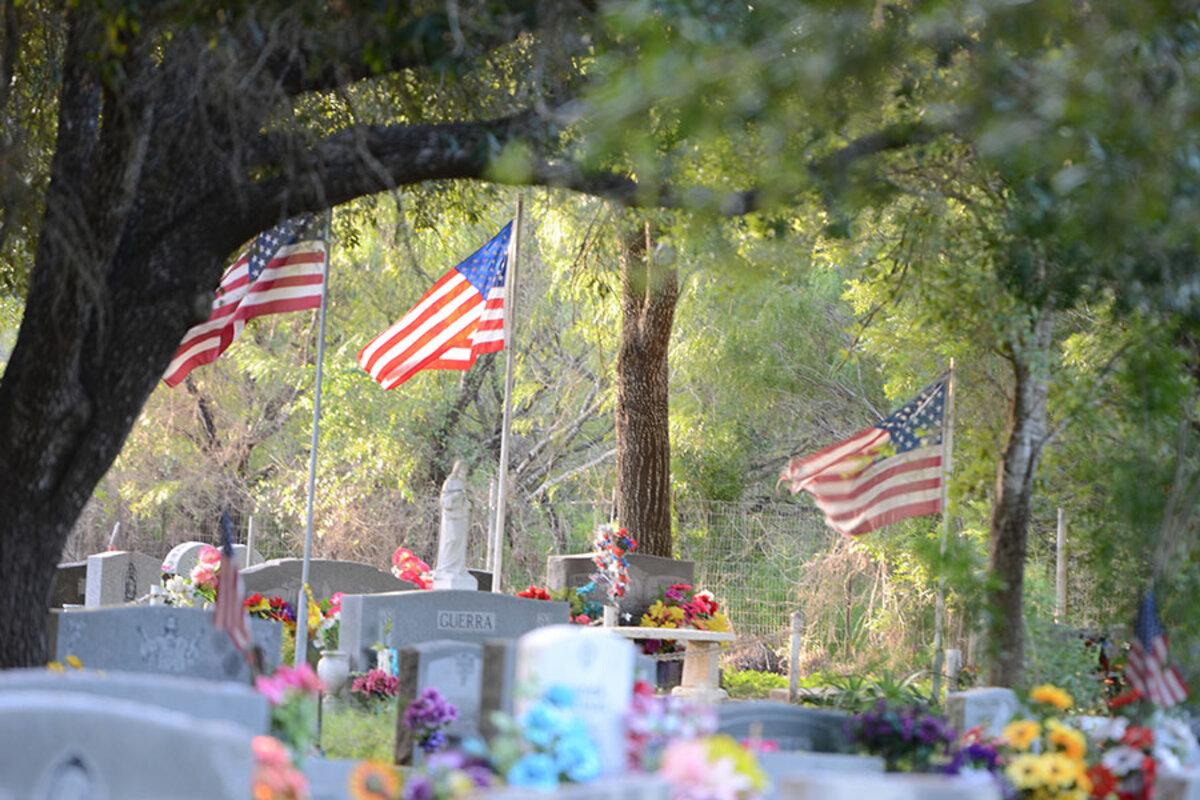Nature’s wall: the human toll of crossing the US border
Loading...
Perhaps no issue divides Hillary Clinton and Donald Trump more sharply than what to do about illegal immigration. Part 4 of a five-part series on the view from the US-Mexico border.
TUCSON, ARIZ. – Shortly before crossing the United States-Mexico border, Josue Oliva-Serrano made a cellphone call.
His wife, a US citizen, had pleaded with him not to go with the smuggler. She told him they could find a more reliable – and lawful – way for him to reunite with her and their two young children in Oklahoma City.
But the 31-year-old Honduran couldn’t stand being away from his family. He had been ordered removed as an unauthorized immigrant following a traffic accident caused by another driver. He could have fled the scene of the accident and stayed safely in the shadows, but the other driver was hurt so he stayed with her until emergency personnel arrived.
Now, he wanted his life back. And he believed he understood the risks of a trek through the Arizona desert. “I’m strong. I can do this,” he told his wife.
“It is almost impossible to imagine a healthy man dying in 48 hours,” says Juanita Molina, executive director of Humane Borders in Tucson, Ariz. During the crossing, the temperature rose to 108 degrees.
After Mr. Serrano’s wife lost telephone contact with him, she started calling people – anyone – who might help save her husband’s life, Ms. Molina says.
During the current presidential campaign, there has been plenty of debate over illegal immigration, including talk of building a wall and deporting some or all of the 11 million unauthorized immigrants living in the US.
But there is another side to the immigration issue – a lethal side.
From 1998 through 2015, 6,571 individuals died trying to cross from Mexico to the US without legal authorization, according to the Congressional Research Service.
It amounts to 386 deaths per year on average – roughly one death every day.
Since 2001, more undocumented border crossers have died in southern Arizona than the total number of US military personnel killed in the war in Afghanistan.
These deaths don’t just happen. They are a function of a US government border security policy that is designed to make it as difficult as possible to cross the border in safer places at or near populated areas. Tall fences have been built and large numbers of Border Patrol agents have been deployed to discourage crossing near cities and towns.
At the same time, policymakers assumed that the dangers of the desert and other remote and rugged terrain would serve as an adequate deterrent to smugglers and unauthorized border crossers. They didn’t.
Instead, the tactic funneled smugglers – including coyotes leading migrants – into increasingly remote and dangerous areas, with predictable results.
“The system we have in place is purposefully designed to use the natural environment to hurt people,” says Jason De Leon, an anthropology professor at the University of Michigan and author of the 2015 book “The Land of Open Graves: Living and Dying on the Migrant Trail.”
“Border Patrol agents say the desert provides a tactical advantage,” he says. “Tactical advantage is just a euphemism for it beats the hell out of people and makes it easier to catch them three or four days after they have walked through the desert – if they are not dead.”
• • •
Even if they survive the desert, a migrant’s journey to the US can still be a savage ordeal, Molina says. One of every two women who attempt the crossing will be raped, she says, based on her years of work and interactions with migrant women. Many purchase birth control pills in Mexico before approaching the border.
“There are some coyotes who even offer what they call ‘rape insurance,’ ” she says. “If you pay an additional price, you will be protected from rape.”
The vast majority of these border-crossers are not criminals, they are not gang members, Molina, Professor De Leon, and others say. They are ordinary people – laborers, workers, dads, moms, sons, daughters – trying to achieve a better life for themselves and their families. That determination should evoke compassion and an effort to alleviate their suffering, they say.
“This is where our [US] immigration practices and the intensity of the criminalization of economic migrants has put a very marginalized population even more at risk,” Molina says.
The Border Patrol is aware of the toll the desert can take on unauthorized border crossers. It has set up a special unit called BORSTAR to provide a search and rescue capability to quickly respond to calls for help.
Joe Halama is a medical specialist assigned to the elite unit. He says during the past year BORSTAR agents operating in the Tucson sector of Arizona responded to 634 emergency calls for help and conducted 257 search and rescue operations. They also recovered 12 dead bodies.
Agent Halama said his most recent rescue came while he was on routine patrol in mid-September. He was in a remote area southeast of Three Points, Ariz., when he came upon a Guatemalan man with his shirt off sitting under a mesquite tree. The man was extremely weak.
“He said he crossed the border eight days prior and that he didn’t have any food or water for the last three days,” Halama said.
He was part of group of 11 that climbed over the 18-foot border fence east of Sasabe, Ariz., he told the agent. Eventually, the group split into two and then the coyote abandoned them. The man said he was lost and had no idea where he was or which way to go.
Halama said he treated the man for dehydration and continued to monitor his vital signs. He offered to take him to the hospital, but the man had responded well to the treatment and declined. Instead, he was transported to the Border Patrol station to be processed for removal to Guatemala.
Amid a difficult ordeal in the desert, agents say, most migrants are more than willing to turn themselves in to a Border Patrol agent. And many agree that being apprehended and sent to their home country is a substantially better outcome than dying alone in a remote corner of the desert.
• • •
In the case of Mr. Oliva-Serrano, his wife began calling immediately when she sensed something was wrong.
A member of the group he was traveling with reported that Serrano got sick after drinking contaminated water. When he became incapacitated, he was left behind.
A search crew went out and actually found him. “It was ten days after he died,” Molina says. “His remains were already so unrecognizable that they had to identify him through dental records.”
In many cases of a migrant’s death in the desert, the problem is trying to discover a name to match a set of unidentified remains. A few of the bodies are found immediately. Some even have a wallet with valid ID. But those are the exceptions. In most cases it takes several months or years before their remains are found by hikers, hunters, or Border Patrol agents. By then all that may be left are a few scattered bones.
That’s where Bruce Anderson enters the picture. He is a forensic anthropologist who works in the Pima County Medical Examiner’s Office.
The shelves in his office are jammed with numbered file folders. Some are arrayed in an arc on the floor around his desk. Most are arranged sequentially in shelves along the office walls.
“There are 1,000 charts in this office. Each chart represents a dead person and they are all unidentified,” he says.
Historically, the medical examiner’s office has been able to positively identify 64 percent of human remains found in the desert. Meanwhile the backlog of unidentified cases continues to grow.
To identify those other cases, investigators turn to family members whose loved ones went missing while crossing the border. This is the work of the Colibri Center for Human Rights, a nonprofit organization housed within the medical examiner’s office.
The Colibri Center seeks to provide a bridge between family members and the as-yet unidentified remains found in the Arizona desert north of the border.
Just as Dr. Anderson keeps a file for each set of unidentified remains, the Colibri Center maintains an extensive database of information provided by relatives of the missing. All of it is assembled into a file for each missing person.
“We take missing persons reports from the families and we gather all the forensically relevant information we can; photographs, tattoo descriptions, dental records, the narrative of what happened, when did he cross, where did he cross, what was he wearing, what did he have in his pockets,” says Robin Reineke, executive director of the Colibri Center.
“We are creating a detailed and comprehensive database of the missing,” she says. “And then we use that database to compare against unidentified remains.”
They are looking for similarities, small potential matches, that might justify additional investigation and perhaps collection of DNA samples from family members.
In one case, a mother searching for her missing son noticed something in a photograph of a pair of camouflage pants: The waist button had been moved and re-sewn to fit a thinner man.
The mother recalled that before leaving for the US border her son decided to wear a pair of his father’s camouflage pants. He asked her to move and re-sew the button.
“It was the power of that photograph,” Anderson says.
The photo was on display on a website, NamUs.gov, that lists reports of unidentified human remains, including photos of clothing and other personal effects. The photo had been on the website for a year before the mother saw it, Anderson says.
It wasn’t enough to make a positive identification. But it prompted investigators to collect reference DNA samples from both the mother and father. That new information allowed Anderson to officially identify the remains as those of the son and to answer the grieving parents’ unresolved question.
Dr. Reineke says that sometimes it can feel in certain cases like they are looking for a needle in a haystack.
But the haystack is about to get a little smaller. The Colibri Center recently received funding to collect DNA reference samples from close family relatives who reported a family member missing while attempting to cross the border in Arizona. Those samples can be checked against the DNA profiles of unidentified remains.
It is a potential game-changer for investigators.
• • •
Arizona isn’t the only place along the US-Mexico border with a high number of deaths of suspected border crossers.
About a thousand miles southeast of Tucson, in a small county cemetery on the edge sleepy Falfurrias, Texas, a forensic anthropologist found the remains of multiple bodies buried together in what amounted to several unmarked mass graves.
They were believed to be the remains of scores of unauthorized migrants who had tried to bypass a Border Patrol checkpoint south of the town. They are believed to have become incapacitated in the hot and arid region and been left behind by a coyote.
An investigation by a researcher at Baylor University found that a large number of the remains had been interred in Sacred Heart Burial Park without any effort in Brooks County to obtain a DNA profile.
“This is a humanitarian issue, it is a human rights issue,” says Kate Spradley, a forensic anthropologist at Texas State, who has taken over the project. “Basically what happened in Brooks County prior to 2013 is that they wiped that individual off the face of the earth. That family would never have the opportunity to know what happened to their loved one.”
“I think about what if my daughter went missing. I would want someone doing what I am doing and what these groups I’m working with are doing,” Ms. Spradley says.
She says that in the years since the discovery of the mass grave, Brooks County has completely reformed its system for dealing with migrant deaths and missing border crossers. Brooks County is now a model for other counties in Texas, Spradley says.
The problem, she says, is that Texas has 254 counties and every county has a different way of conducting migrant death cases. There is evidence, she says, that other Texas counties may have failed to properly handle migrant deaths. Further investigation is necessary, Spradley says.
To help identify remains in Falfurrias, the South Texas Human Rights Center has started organizing an annual day-long event for any family members with missing loved who they think died crossing the border or trying to bypass a checkpoint. The family members can provide their own DNA as a reference.
So far, anthropologists have exhumed the remains of 191 individuals at the cemetery. Of those, 87 percent have had DNA submitted for analysis. To date, 13 have been positively identified.
Part 1: Trump’s wall on the border: Will it work?
Part 2: The hopes and lies driving children to the US
Part 3: Alejandra, age 7, is facing a judge alone. Is that due process?
Part 4: Nature’s wall: the human toll of crossing the US border
Part 5: A drop of water in the desert, and a flood of migrants
[Editor's note: The titles for Robin Reineke and Bruce Anderson have been updated.]








